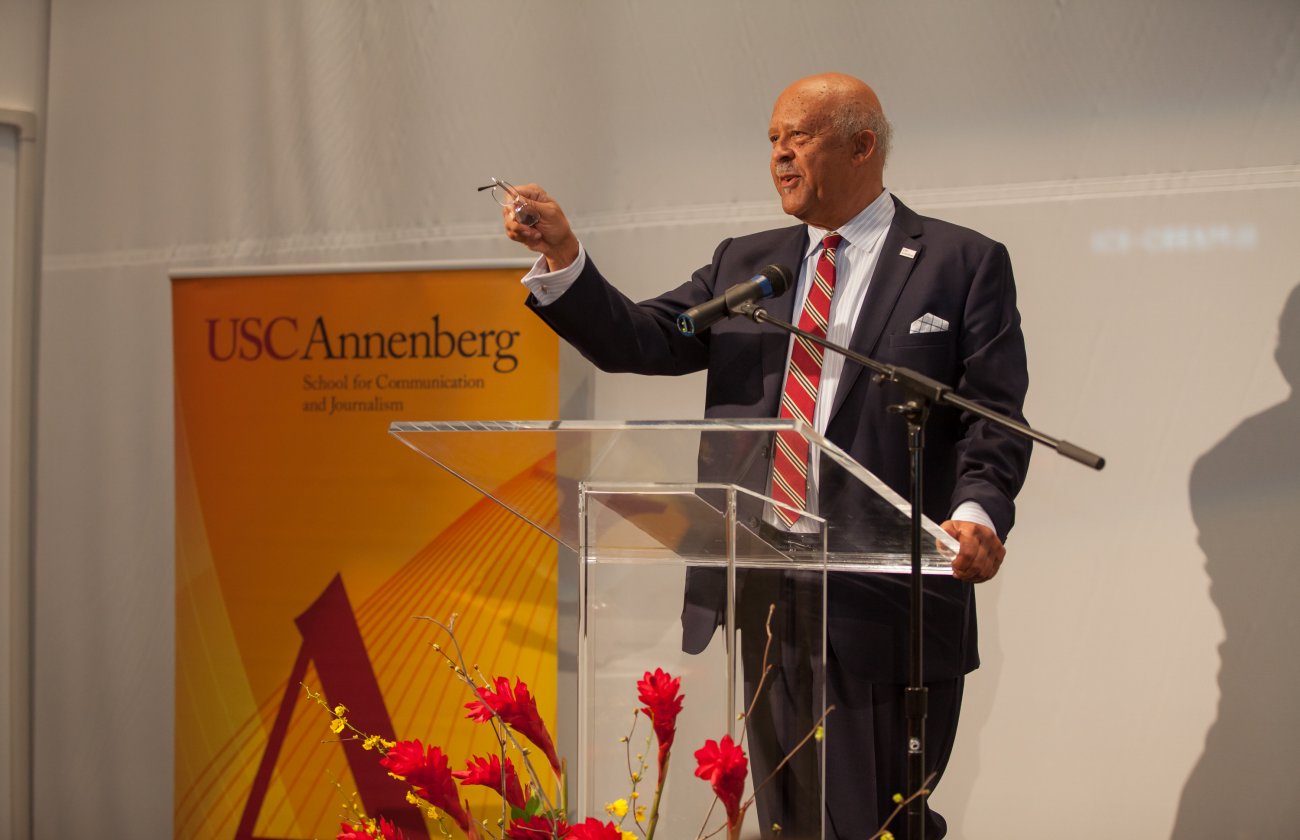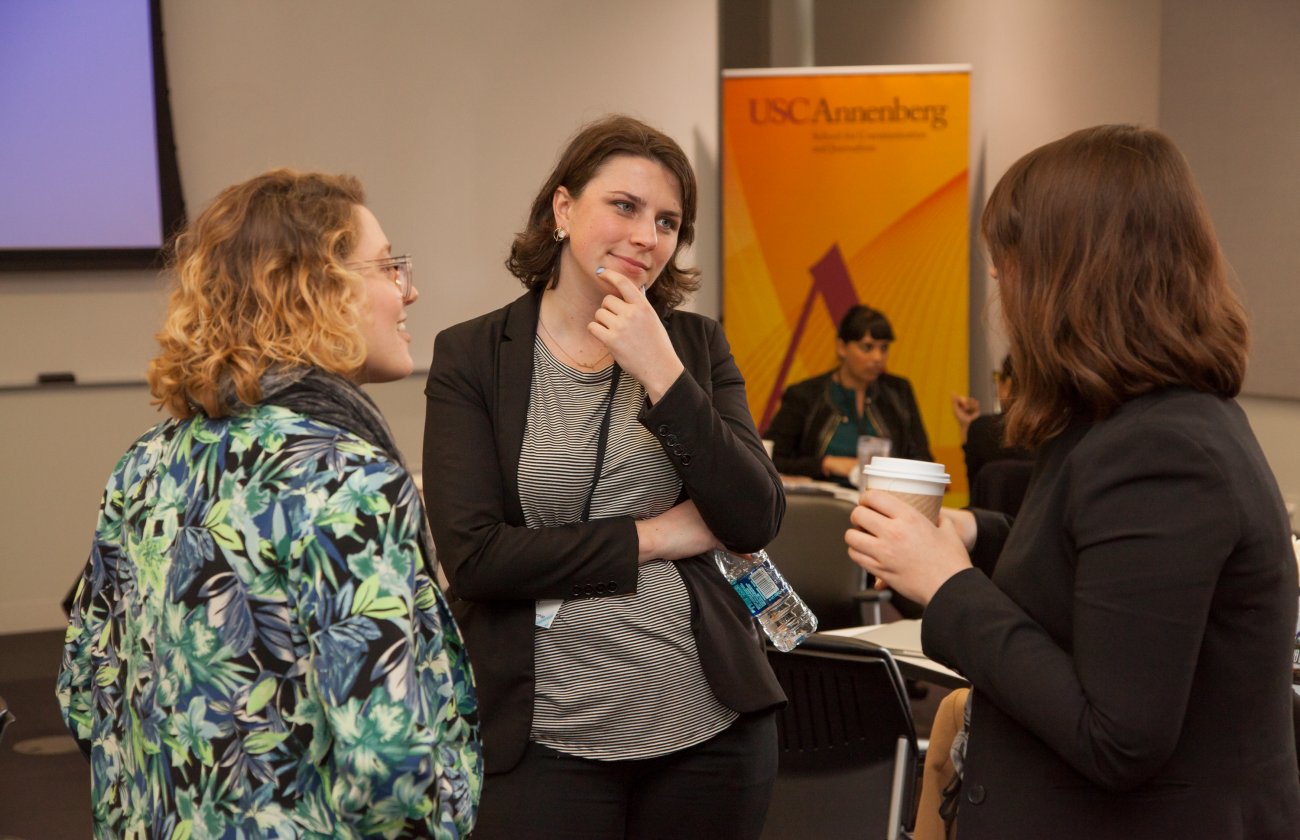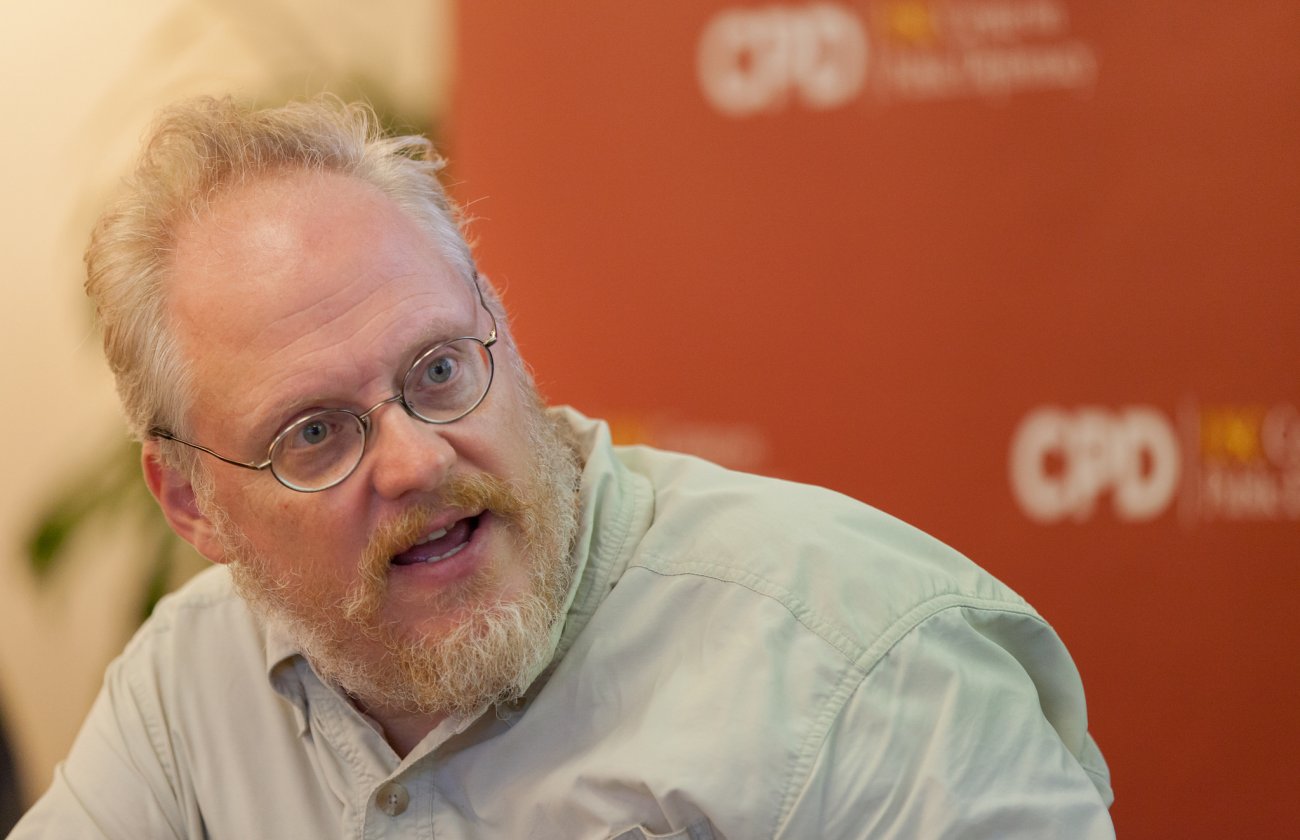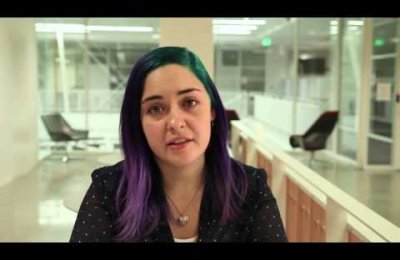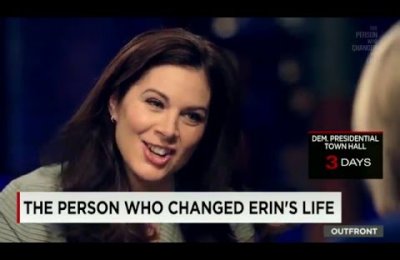By: Alex Reed
Student Writer
Journalism Professor Robert Hernandez kicked off the spring lineup of weekly Journalism Forums on Jan. 14 with a presentation of his recent work with augmented reality (AR), technology that superimposes computer-generated images and information on real life objects and experiences.
“Basically, the way that I look at it is real life enhanced by digital life,” Hernandez told a full crowd of faculty and students.
Hernandez has been interested in the topic for years and decided to start this experimental class a year ago. He consulted with AR tech artist BC Biermann, who came to the forum to discuss and demonstrate his work with augmented street art, after meeting at a conference two years ago. Biermann specializes in using public works, such as murals, to display digital content visible through Re+Public, a mobile application he created.
Once forum attendees downloaded the app to their mobile devices, they were able to hold it in front of a picture of augmented art to see three-dimensional shapes and colors coming out of the picture. People even began moving around the room and standing on their chairs to see the augmented content from different angles.
After showing several augmented murals and paintings, Biermann explained that the goal of his work was to use to technology to get people off their computers and draw them out of their homes.
“Our interest is to push people outdoors, to see their city spaces differently,” he said.
Quick Response (QR) codes, barcode-like images that pull up content after being scanned by mobile apps, have become a “visual signifier” of AR. Biermann predicted that soon, however, people won’t need such visual cues.
“You’ll just assume that it’s everywhere,” he said.
Biermann’s work is currently only found in a handful of cities, though the artist said his hope is to bring some of his projects to Los Angeles as soon as February.
Los Angeles currently has very little augmented content in its public spaces, but seven students in Hernandez’s fall course, “Augmented Reality & Journalism,” recently completed the first phase of a project that brought augmented content to the Los Angeles Public Library.
Students Kaitlyn Mullin, Heather Navarro, Daniella Segura, Sydney Tuss, Serhan Ulkumen, Phoebe Unterman and Sammi Wong kept people updated on the project and discussed other AR projects and applications on their blog throughout the semester.
The project involved each student finding a different location or object in the library and deciding what augmented content should go there. The public can gain access to the LAPL channel to experience the library’s digitally augmented locations and objects by using augmented reality browser Junaio and a QR code, both of which are set up to identify augmented places.
The app can even open up content when it is held in front a picture of the library locations with augmented content, which allowed Hernandez and his students to share their work using a PowerPoint presentation during the forum.
One statue of a torch held by a hand was augmented to share events surrounding a 1986 library fire, connecting the user to related interviews, photographs and video footage when looked at through the app.
Every Saturday at 2 p.m., the library has a puppet show in its children’s section. Holding the app up to the stage, even when empty, allows people to view a digital version of the show at all times.
The class was also able to augment several books from the special collections, which that are generally kept away from the public. In the future, they hope to augment additional books whose contents can be read in their entirety.
However, the project is not complete. The LAPL channel on Junaio is a beta version, and is still being tested. The goal is to eventually produce a separate, customized app for the augmented content at the library.
“I had a chance to inspire, to get our imaginations going, but also had to make sure that we didn’t get our hearts broken with where the technology is,” said Hernandez, admitting that augmented reality still needs time to develop.
“This was the first draft of AR storytelling” he added. “It’s not journalism in the traditional sense, but we were able to get information, inform the community and also tell fun stories.”

